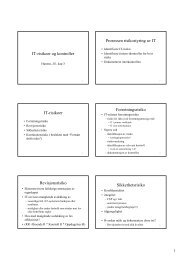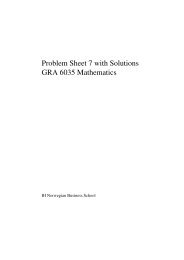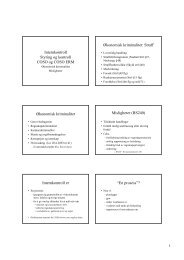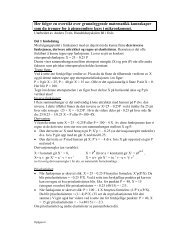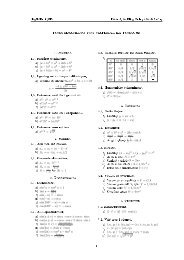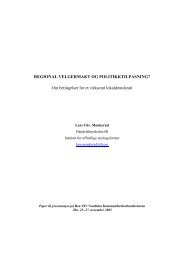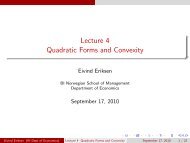Problem Sheet 9 with Solutions GRA 6035 Mathematics
Problem Sheet 9 with Solutions GRA 6035 Mathematics
Problem Sheet 9 with Solutions GRA 6035 Mathematics
Create successful ePaper yourself
Turn your PDF publications into a flip-book with our unique Google optimized e-Paper software.
3<strong>Solutions</strong>1 The Lagrangian isand the Kuhn-Tucker conditions areandL (x) = x 2 1 + x 2 2 + x 2 − 1 − λ(x 2 1 + x 2 2 − 1),L ′1 = 2x 1 − 2λx 1 = 2x 1 (1 − λ) = 0L ′2 = 2x 2 + 1 − 2λx 2 = 2x 2 (1 − λ) + 1 = 0λ ≥ 0 and λ = 0 if x 2 1 + x 2 2 < 1.From L 1 ′ = 0 we obtain 2x 1(1 − λ) = 0. Thus x 1 = 0 or λ = 1. If λ = 1, thenL 2 ′ = 2x 2 + 1 − 2x 2 = 1 ≠ 0, so we conclude that x 1 = 0.CASE x1 2 + x2 2 = 1 :From x1 2 + x2 2 = 1 and x 1 = 0 we obtain x2 2 = 1 or x 2 = ±1. We have L 2 ′ =2x 2 (1 − λ) + 1 = ±2(1 − λ) + 1 = 0 =⇒ (1 − λ) =±2 −1 = ∓ 1 2 =⇒ λ = 1 ± 1 2 .Thus(0,−1) corresponding to λ = 1 2 and(0,1) corresponding to λ = 3 2are candidates for maximum.CASE x1 2 + x2 2 < 1 :From x 1 = 0 we get x2 2 < 1. This is the same as to say −1 < x 2 < 1. Since λ = 0,L 2 ′ = 2x 2 + 1 = 0 gives x 2 = −2 1 . We conclude thatis a candidate for maximum. We compute(0,− 1 ) corresponding to λ = 02f (0,1) = 1f (0,−1) = −1 andf (0,− 1 2 ) = −5 4and conclude that f (0,1) = 1 is the maximal value.2 See answers in FMEA (Exercise 3.5.1)3 We will use the following general method of solving




